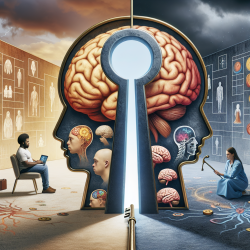Understanding Global Processing in Amblyopia: A Game-Changer for Practitioners
Amblyopia, often referred to as "lazy eye," is a neurodevelopmental disorder that affects the visual system. It is primarily caused by abnormal visual experiences during early childhood, leading to persistent deficits in cortical processing. This condition is traditionally categorized into three types: strabismic, anisometropic, and deprivation amblyopia. Recent research has highlighted the importance of understanding global processing deficits in amblyopia, which extend beyond the primary visual cortex to regions involved in visual integration.
Key Findings from Recent Research
The research article "Global processing in amblyopia: a review" provides a comprehensive overview of the global processing deficits associated with amblyopia. The study highlights several critical insights:
- Global Motion and Form Perception: Individuals with amblyopia exhibit deficits in global motion perception, particularly when tasks require the segregation of signal from noise. This deficit is more pronounced in bilateral cases compared to unilateral ones.
- Face Perception: Amblyopia affects face perception, particularly in tasks that require configural processing of facial features. This deficit is more evident in cases of bilateral deprivation amblyopia.
- Biological Motion: Surprisingly, biological motion perception appears to be preserved in amblyopia, suggesting that some aspects of complex processing may be resilient to abnormal visual experiences.
Implications for Practitioners
Understanding these global processing deficits can significantly impact how practitioners approach amblyopia treatment. Here are some strategies to consider:
- Incorporate Global Processing Tasks: Include tasks that assess global motion and form perception in your diagnostic toolkit. This can help identify specific deficits and tailor interventions accordingly.
- Focus on Signal/Noise Segregation: Develop interventions that enhance the ability to segregate signal from noise, which is a common challenge in amblyopia.
- Leverage Biological Motion Perception: Utilize tasks involving biological motion as part of therapy, as this aspect of visual processing remains intact and can be a foundation for further improvement.
Encouraging Further Research
While the current research provides valuable insights, there is still much to learn about the complexities of global processing in amblyopia. Practitioners are encouraged to stay updated with ongoing research and consider participating in studies that explore innovative treatment approaches.
To read the original research paper, please follow this link: Global processing in amblyopia: a review.










